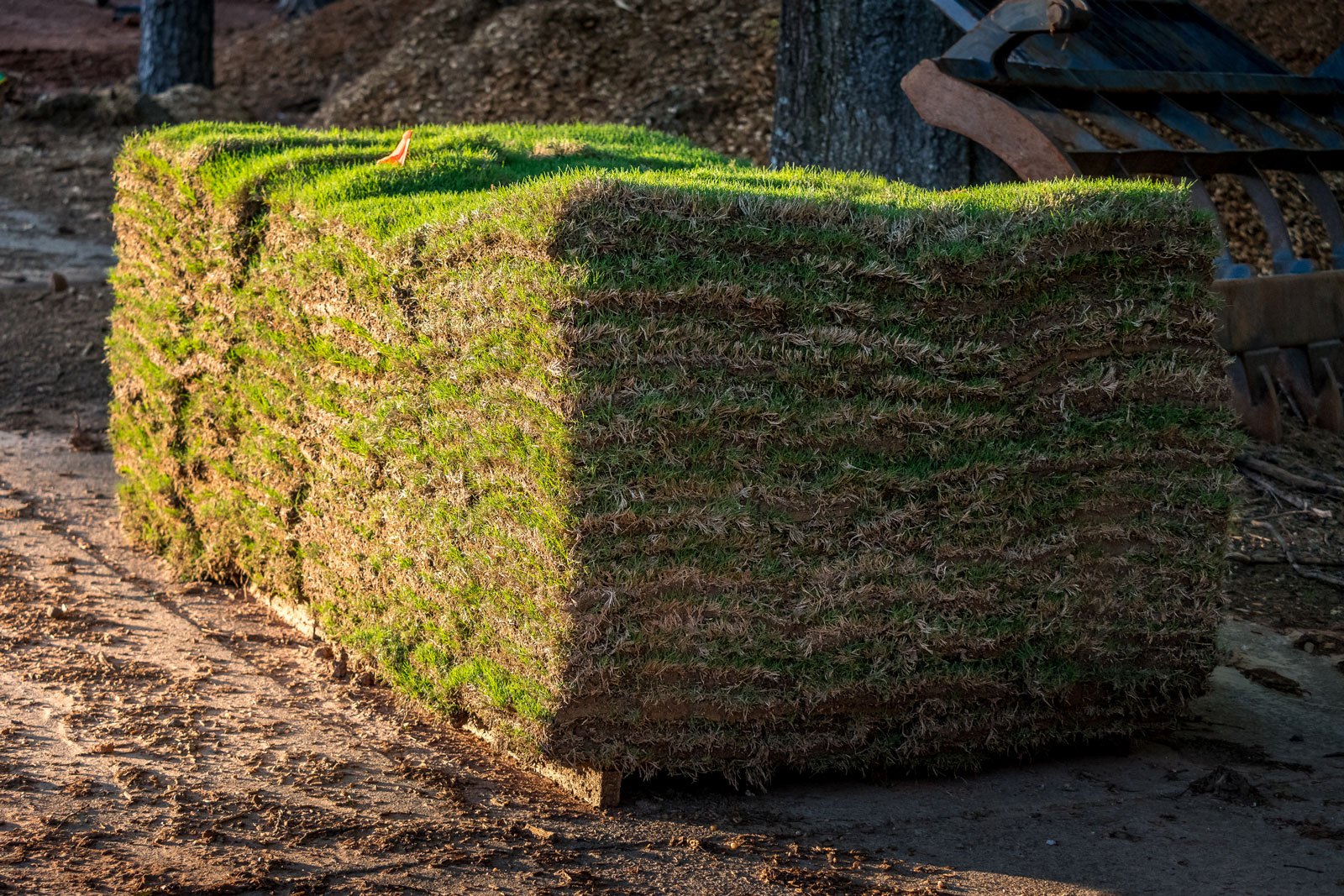Sod is very fragile. Whether you are installing St. Augustine, Bermuda 419, or another sod variety, you will need to make sure your soil is all prepared and ready for sod installation to ensure its survival.
A lot of variables affect the survivability of sod: humidity levels, soil and surrounding temperatures, sunshine exposure, and more. Heat, for example, decomposes sod very quickly. If you are installing sod in the middle of the summer, you should have your sod delivered on the very day you are laying it, if possible.
Always make sure you order from a reputable sod farm: you want your sod to be harvested the same day it is shipped to your yard. Otherwise, your sod will arrive at your project already decomposing.
Here are some more tips to show you what affects your sod’s health and how you can extend your sod’s survival if you can’t install it immediately.
How Can I Make Sure My Sod Grows Well?
Soil preparation is key to sod’s survival. Prepare the soil by softening it. Remove all existing grass, pebbles, and rocks, and make sure your soil is level. Water the soil before laying the sod but don’t turn it into mud.
Fresh sod likes soft soil to dig its roots in. Hard soil will make it difficult for the sod to grow its roots and provide nutrients and water to the grass blades.
Are You Laying Your Sod in Summer or Winter?
If you are wondering how long you can leave your St. Augustine grass on a pallet, the answer depends on the time of the year. Sod in winter can survive on pallets for up to 5 to 7 days. That’s because the surrounding temperature is low and sod is not losing humidity quickly.
In the summer’s high heat, however, sod can only survive up to 24 hours before starting to decompose. That means you must install it the moment it reaches your project.
What Can I Do to Extend the Sod’s Life on a Pallet?
The best thing you can do to extend your sod’s life before installing it is to unload it off the pallets. The sod pieces or rolls should not be stacked together but spread in the shade. Once there, water them gently without soaking them. Be careful not to water the sod while it is still rolled or packed on pallets. When sod is harvested, it still tries to grow roots. This minimal growth produces nitrogen. This nitrogen is released when the sod is heated up, which kills it.
Even in this case, the best you can do is extend your sod’s life by a few hours. You can’t leave your St. Augustine sod or Bermuda 419 on a pallet for days on end: it will just die. We suggest you water your sod off the pallets within 30 minutes of unloading it.
How Much Water Should I Give My Freshly Installed Sod?
You should aim for an inch of water per day for the first 20 days of installation. Your sod should be wet but not soggy or muddy.
Opt for a sprinkler rather than hand watering. Your sprinkler will spread the water evenly and over a longer time, while watering by hand tends to deliver large quantities of water within mere minutes. In this case, most of the water will simply get lost to the ground.
A good trick is to start watering your sod the moment it is laid. Once you have installed some of your Bermuda 410 from the pallets, start watering it with your sprinklers while you are still installing the rest of your sod. That way, your lawn will be immediately watered and soothed from the transplant shock.
To avoid the development of fungus and diseases, you should water your new lawn early in the morning. That way, you give it plenty of time to dry throughout the day. Wet and soggy lawn in the evening and night creates the perfect environment for bacteria and fungi to settle in.
How Do I Know if My Sod Is Alive?
Has your Bermuda 410 been lying on a pallet for a few hours? If your sod has been sitting in the sun, you may be wondering if it’s still alive.
If you see your sod all black and gooey, it’s probably past salvation. However, if your sod is yellowish, you can still save it as long as you install it immediately, water it, and fertilize it. If you find spots where your sod didn’t take, we suggest you grow some lawn from the same seed.
Twinwood Farms for Your Sod
If you work with professional sod farmers like Twinwood Farms, you will have the certainty that the sod was harvested right before traveling to your project. If your soil is well prepared in advance, your sod will only stay stacked on a pallet for a few hours. Give it plenty of water when you plant it and you will soon have a beautiful lawn to enjoy.
Here at Twinwood Farms, we are sod farmers and know how to help your sod grow its rooting system. Contact Twinwood Farms online or call us now at 346-707-6023 and let us start working on your garden or landscaping project!



